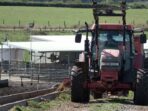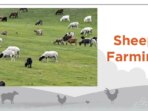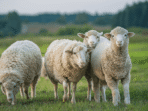Benefits of Rotational Grazing for Livestock is like a buffet for cows but with a twist—think of it as a gourmet dining experience for your grazing friends! Instead of munching on the same patch of grass day in and day out, rotational grazing allows livestock to feast on fresh pastures, promoting healthier animals and happier ranchers. With a sprinkle of science and a dash of humor, let’s explore how this method not only keeps the grass greener but also gives livestock a leg up in the culinary department.
This method involves moving livestock from one pasture to another in a planned sequence, allowing the grass to recover in between. The benefits are bountiful, with improved soil health, increased pasture productivity, and even a positive impact on the environment. So, grab your boots and let’s graze through the many delightful advantages of this sustainable practice!
Once upon a time in a land far, far away (or perhaps just a couple of blocks down your street), there existed a kingdom ruled not by kings or queens, but by the most unlikely of sovereigns: the potato. Yes, you heard it right—the potato! This round, earthy tuber had not only taken a seat at the table of culinary royalty but had also conspired to rule the hearts and stomachs of every inhabitant in the land.
The Rise of the Potatoes
In a world where tomatoes were the flamboyant divas, and carrots strutted their stuff like Hollywood stars, the humble potato quietly worked behind the scenes, crafting its master plan. While the other vegetables were busy bathing in dressing and posing for Instagram, the potato was diving deep into the depths of starch and resilience. This was no ordinary vegetable; this was the potato with a PhD in culinary versatility!
From mashed to fried, baked to boiled, and even in a sneaky disguise as a chip, the potato was the true chameleon of the vegetable kingdom. It could morph from a sidekick on your dinner plate to the main event in a deliciously cheesy casserole faster than you could say, “Pass the gravy!”
The Secret Society: The Spud Alliance: Benefits Of Rotational Grazing For Livestock
But little did the world know, this wasn’t just a one-potato show. There was a secret society lurking in the shadows, gathering all the potatoes together, calling themselves “The Spud Alliance.” Their mission? To overthrow the tyranny of other vegetables and claim the title of “King of the Kitchen.” Meetings were held under the cover of night in basements stuffed with burlap sacks, where they discussed the merits of various cooking methods, debated the perfect spices, and even analyzed how many people could fit into one potato sack for the ultimate potato sack race.
Among the members was Sir Tater Tot, the mischievous little fellow who could always be found in the corner, plotting ways to introduce more potato-based snacks into the world. Then there was Lady Baked, a sophisticated potato who insisted on being served with a sprinkle of sea salt and a dollop of sour cream, and the enigmatic Mr. French Fry, who believed he could win over hearts with his crispy charm and a side of ketchup.
The Culinary Conspiracy Unfolds
As their plans unfolded, the Spud Alliance devised a scheme to infiltrate every household. “We shall become every comfort food’s best friend!” cried Sir Tater Tot, his tiny voice echoing through the dimly lit basement. He was met with a round of applause, or rather, a round of cheers that sounded oddly like a collective “Fried!”
Suddenly, the world exploded into a whirlwind of potato-based dishes. French fries invaded fast-food menus, mashed potatoes became the quintessential side dish at family gatherings, and potato salad was crowned the star of every summer picnic. People began to take notice of the potato’s versatility, and before they knew it, it was popping up in unexpected places, like potato pancakes at breakfast and even a daring potato smoothie for the adventurous souls out there—because why not?
The Great Potato War
However, not everyone was willing to accept the potato’s rise to glory. The Tomato Liberation Front (TLF) saw the potato as a threat to their reigning dynasty of sauces and salads. They weren’t just going to sit around and let the potato take over the world without a fight. “We shall smear ketchup on every French fry and outrun these starchy tyrants!” declared their leader, Ketchuptin, who had a flair for the dramatic.
A culinary war erupted, with both sides launching food fights in the streets. The battle scenes became legendary, with potatoes flying through the air, slapping unsuspecting tomatoes left and right. There were spectacular displays of mashed potato catapults and tomato cannonballs that would put any food fight in school to shame. It was a culinary showdown that would go down in history!
The Unlikely Alliance
Amidst the chaos, a curious thing happened. As the potatoes and tomatoes clashed, they experienced a moment of collective clarity. They realized that they could coexist! “Why are we fighting when we could be winning hearts together?” exclaimed Lady Baked, who had just taken an inspiring bite of a newly crafted dish: the infamous “Potato-Tomato Hash.” Suddenly, the two sides came together, creating culinary masterpieces that combined their strengths.
Who knew a potato could be best friends with a tomato?
A New Era of Flavors
Thus began a new culinary era, where potatoes and tomatoes joined forces to create delightful dishes that would leave taste buds dancing in jubilation. They became the power couple of the kitchen, inspiring new recipes like Spud and Sauce Pizza and Tomato-Potato Curry. They even launched a cooking show called, “Sautéing Spuds and Saucy Slices,” where they would share their delicious collaborations with the world.
People everywhere rejoiced, baking, frying, and mashing their newfound love for these two culinary powerhouses. Restaurants flourished, and home cooks found joy in creating dishes that celebrated both flavors. Even the carrots, who had been feeling a little left out, found ways to join the party, resulting in an epic vegetable dance-off that had everyone laughing and crying at the same time.
The Legacy of the Potato
Years later, as the world enjoyed the fruits (and vegetables) of their labor, the potato had solidified its legacy as a kitchen royalty. The Spud Alliance had transformed from a secret society into a global movement, with spud enthusiasts gathering every year for the Great Potato Festival—a celebration filled with potato wrestling, potato sack races, and of course, the famous potato bake-off that drew in contestants from every corner of the globe.
The festival became a symbol of unity, proving that even the most unlikely of ingredients could come together to create something extraordinary. Sir Tater Tot was crowned the honorary mayor of the festival, while Lady Baked served as the head judge for the bake-off. Mr. French Fry, in all his crispy glory, became the official mascot, effortlessly sliding into hearts and fry baskets alike.
Conclusion: The Spud-tastic Future
And so, dear readers, the saga of the Great Potato Conspiracy reminds us that sometimes, when you gather a group of unlikely heroes, magic can happen—even if they happen to be root vegetables. So the next time you enjoy a warm plate of mashed potatoes or a crispy batch of fries, remember the little tuber that could, and the epic tale of friendship, rivalry, and deliciousness that brought us all together.
After all, in a world full of vegetables, it’s the spud that truly shines the brightest!
Now, go forth and spread the potato love—may your fries be golden, your mash be creamy, and your potato salad forever chilled!
Key Questions Answered
What is rotational grazing?
It’s when livestock are moved between pastures to allow grass to regrow, maximizing their grazing experience and the health of the land.
How does rotational grazing benefit soil health?
By preventing overgrazing, it enhances soil structure and fertility, leading to richer, more productive pastures.
Can rotational grazing improve livestock health?
Absolutely! It reduces the risk of parasite infestations and promotes a varied diet, leading to healthier and happier animals.
Is rotational grazing more time-consuming?
It may require more planning upfront, but it saves time in the long run by improving pasture quality and reducing feed costs.

What types of livestock can benefit from rotational grazing?
Most grazing animals like cows, sheep, and goats thrive with this method, as they all enjoy a fresh meal every now and then!




